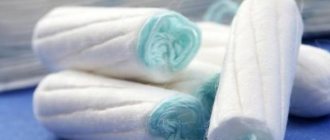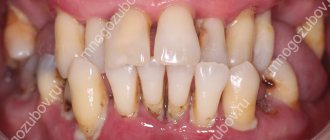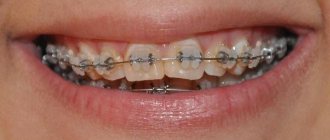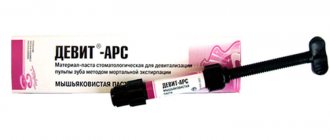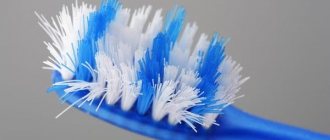Those users who have at least once experienced the delight of increasing the size of their computer's RAM by two or more times are sure that the more memory, the faster the computer works. However, the rule “more memory - faster computer” does not always work. After a certain value, the effect decreases and then disappears altogether. Now let's try to figure out how much memory can theoretically be installed in a computer, and how much is actually needed for optimal operation of applications and the operating system.
IV catheters
These medical devices are used to introduce drugs into the bloodstream over a long period. A catheter is a small hollow tube that is inserted into a vein in different parts of the body (arms, head, collarbone). With its help, injury to the vein is eliminated. Installation is carried out in stationary conditions. There are several types of catheters for IVs:
- Butterfly system. This medical product is a needle with plastic wings at the base. Their purpose is to attach the catheter to the patient’s skin. The advantage of such a system is its ease of use and installation. The disadvantages include the fact that the needle is constantly in the vein, exposing it to injury if moved carelessly. The product is used quite often in cases of single administration of drugs, which takes no more than two hours.
- For peripheral veins. This type is intended for long-term use. The product is made of thin plastic. The needle is used only to puncture the vein and insert the catheter. One of the advantages is that the patient does not experience any inconvenience in the future, since the product itself is made of flexible plastic material. The catheter is changed after three days.
- For central veins. This system for insertion into the subclavian vein consists of a guidewire, a catheter and a set of needles. Designed for administering drugs into the bloodstream over a long period and is used in cardiac surgery, oncology, and intensive care. The installation of such a catheter is considered a minor surgical intervention and is performed by a resuscitation doctor in a medical organization. This manipulation is accompanied by a large number of complications, so peripheral veins are often used to administer medications. The system is introduced into the peripheral vein and then pulled into the central vein. In this case, the likelihood of complications is reduced.
Regardless of the type of catheter, its size matters. Products are marked according to color depending on this parameter:
- Orange. This color indicates thick catheters intended for viscous solutions and blood components.
- Violet. This tone is used for the thinnest products that are used for infusion of solutions.
Stages of monument installation (foundation, monument, fence)
Installation of the monument consists of two stages:
- Pouring the foundation;
- Tiling the base, installing a stele and flower bed. Installation of a fence.
Before pouring the foundation, you need to dig a trench for it. You should pay attention to the soil characteristics in this region. If the ground is sandy, you may have to additionally strengthen the edges of the trench for the foundation. In chernozem soil, strengthening is usually not required.
The basic rule: the soil on the grave must be well compacted. Otherwise, the foundation may skew. This is why they wait at least half a year after the funeral.
After pouring, the foundation needs about 2 weeks until it dries completely, only after which can the stele be installed on the grave. It is forbidden to pour the foundation at subzero temperatures. Because it will freeze faster than it will dry. Later, after thawing, this will lead to distortion of the monument.
Among other things, the correct technical pouring of the foundation also remains important. A team with experience in installing monuments is unlikely to do anything wrong. Our advice is to contact trusted specialists.
When the foundation for the monument is poured and completely dry, you can install a stand, stele, flower bed and tile the grave site. Granite components are attached to the concrete base using a special stone adhesive. Compliance with the operating conditions of the adhesive is a prerequisite. The temperature at which the glue must be used is indicated on the packaging or in the instructions for the glue.
Additional recommendations
Only a doctor can determine how many IVs can be placed in a row.
If a preliminary consultation is not possible, then the solution should be administered once. This eliminates the possibility of overdose, which is fraught with unwanted reactions and complications.
Which arm is the IV placed in? If you perform the procedure on yourself, it is better to insert the needle with your right hand for a right-handed person, and with your left hand for a left-handed person. This increases the likelihood that the needle will hit the vein exactly and not injure the skin.
When administering infusion therapy to another person, you can place an IV in either arm, because it does not matter.
Is it possible to put an IV in the leg? This option for administering the medicine is possible if the veins in the upper extremities are poorly visible. The indication for intravenous administration of the solution in the lower extremities is thrombophlebitis of the venous structures in the arms.
In order to install an IV, you do not need to have a medical education. It is important to first consult with your doctor to correctly select the drug and calculate the dosage.
To carry out the procedure correctly, you must first study the sequence of actions and purchase all the necessary tools. Please note that by placing an IV on yourself or another person, you take responsibility for the consequences.
That is why it is best to seek help from a medical professional who has all the necessary skills.
When to install a fence on a grave?
Religion does not establish strict rules for installing a fence on a grave. It is only advised not to erect a fence until 40 days after death, since it is believed that the soul of the deceased is still on earth and there is no need to limit its movement by fencing the burial site.
The installation time of the fence depends on the method of its installation. There are fences that are mounted into a concrete foundation, and there are those that are installed on top of the foundation.
If the fence is mounted into the base (filled with concrete), then naturally the fence is installed during the pouring of the foundation. What's wrong with this method? Due to the large weight of the monument, installing it through the fence becomes extremely inconvenient.
How to install the system (drip)?
To set it up correctly, you need to do a little preparatory work, which will consist of the following:
- Place a drip stand next to the patient, which is a stand on which the bag with the infused solution will be attached.
- Wash your wrists and hands thoroughly with soap, not forgetting the areas between the fingers. Next, they need to be blotted dry rather than wiped. Or you can use any antiseptic intended for hand treatment.
- Check the name of the drug prepared for administration with the prescription of the treating doctor.
- Prepare the system, needle, tourniquet, fixation patch, cotton or gauze swab, alcohol solution of chlorhexidine for sterilization.
- In the package with the medicine, find the connection point to which the system will be connected and wipe it with a swab soaked in an alcohol solution.
- Attach the dropper and the bag, hang it on the stand.
- Remove all bubbles.
- Wear gloves.
- Approach the patient.
Now proceeds directly to setting up the IV:
- Bandage your hand with a tourniquet over the puncture site.
- Disinfect the injection site.
- Install a catheter, which is a small tube that is inserted along with the needle, and after it is removed remains in the vein. Place it at an angle of 30 degrees to the patient's arm. Next, remove the needle and remove the tourniquet. Wipe the area where the catheter is attached with an alcohol solution.
- Attach the IV tube to the catheter, securing it with a bandage.
- Adjust the speed of drug administration using a special wheel-clamp installed on the system.
They are used for infusion of solutions and medications in liquid form. Composition of the infusion system:
- a special device that pierces the lid and has a built-in air valve;
- dropper with filter;
- cameras;
- a flexible long tube with a clamp regulator with which the infusion is regulated.
The dropper system with filter allows you to retain clots larger than 30 microns. The product is used once. The material used in their manufacture is transparent and allows you to see air bubbles, the level of the solution, and the speed at which drops fall.
Based on the size of the filter cells, the drip system is divided into infusion products:
- solutions;
- blood and blood substitutes.
A correctly selected system taking into account the cell size is the key to successful therapy. For example, to administer a solution of glucose or electrolytes, small cells will prevent harmful impurities from entering the bloodstream. And in the case of transfusion of blood products, such cells will quickly become clogged with blood elements, and the infusion process will stop.
Based on the type of needle used, which is connected to a bag or bottle, systems are distinguished:
- with a metal needle;
- with a polymer needle or plastic spike.
The choice of infusion system for the drip in this case will depend on the container in which the drug is located. A metal needle is used for glass containers, and a polymer needle is used for bags.
This product can be used with both glass bottles and transfusion bags. It includes:
- needle made of plastic and metal;
- two protective caps;
- dropper with filter;
- long connecting tube made of transparent material;
- air intake valve;
- connector;
- roller regulator.
In order to infuse donor blood, plasma, blood transfusion systems are used. These products were invented by a British obstetrician in 1818. Since then they have been slightly improved. The drip system is equipped with a filter with large cells, which makes it possible not to miss blood clots and at the same time ensure the flow of blood at a certain speed. The presence of filters is especially important when transfusing condensed blood, which has a high viscosity.
This dropper is intended for infusion of infusion solutions and blood substitutes from a bottle. The medical device consists of:
- needles;
- drip system with filter;
- flexible hose;
- latex tube for cam infusion regulator;
- needle-air duct;
- clamp for adjusting the speed of insertion;
- devices for piercing the lid with a metal needle.
The hose and dropper are made of transparent material.
And why do you need IVs at all? Why can't you take pills?
The effectiveness of a drug depends on such things as bioavailability. Bioavailability is a parameter that shows what part of the administered dose of a drug enters the blood and characterizes the rate at which this entry occurs. Bioavailability is 100% for drugs that are administered intravenously.
Thus, medications administered by dropper act as quickly and effectively as possible.
To assess the bioavailability of a substance, a curve of drug concentration versus time is assessed after its administration into a vein and administration through the studied route. The resulting concentration of the substance in the blood per unit time is estimated and expressed as a percentage. For most known dosage forms, bioavailability has been studied and known. In droppers for the treatment of alcohol intoxication, drugs with maximum bioavailability are used.
Droppers quickly and effectively help to recover from binge drinking or a severe hangover.
When is the best time to install a monument on a grave?
The unspoken installation period arose due to the characteristics of the earth's surface and the weight of the tombstones that are placed on the grave. All natural stone monuments are heavy, so the ground under such a monument must be well compacted. Any distortion of such a heavy structure (the average monument weighs more than 100 kg) entails a labor-intensive process of reinstalling the structure. It will be necessary not only to remove and reinstall the monument itself, but also to level the level of the foundation, and this is already a huge amount of work that will result in a tidy sum.
As a rule, it takes at least six months for the soil to be completely compacted. It is advisable to wait for a full winter before installing the monument, since maximum soil subsidence occurs during the winter. If the deceased was buried in the spring, then install the monument no earlier than the spring of next year, since the risk of soil subsidence is still very high. Take your time, wait for the soil to completely shrink.
The monument should be erected after the funeral no earlier than six months later, making sure to wait until the full winter. Any doubts will be dispelled by the cemetery administration, which will tell you how much time is needed for the land to settle on the grave.
Possible complications
During the process of setting up and administering an IV, some complications may develop:
- A through puncture of a vein at the time of its puncture.
- Hematoma caused by weak pressure on the tampon after removing the catheter.
- Getting solutions under the skin. Particularly dangerous is a polarizing mixture that contains potassium and causes tissue necrosis.
- The development of edema due to poor kidney function.
- Allergic reactions to injected drugs.
The possibility of developing the complications described above should be considered before starting therapy. It is necessary to have a kit for the relief of allergic reactions, diuretics, and know the contacts of the intensive care unit. If treatment is carried out at home, you need to have a telephone number and the number of an ambulance station nearby.
| Type of complication | First aid |
| Vein puncture | Firmly pressing the puncture site, puncture of another vein |
| Hematoma | Local cold, then warm |
| Getting the solution under the skin | Local warmth |
| Edema | Diuretics, hemodialysis |
| Allergies | Suprastin, tavegil, hormones |
Hematoma at the injection site
Do they light candles for the repose?
Archpriest Sergius Vasin, rector of the Church of the Nativity of the Blessed Virgin Mary in the village. Bobyakovo, Novousmansky district, Voronezh region
Yes, we light candles both for the health of people and for dead people, for the repose of their souls. A candle is a symbol of our coming before God, the burning of our prayer to God or to the saints of God. Also, a candle is a sacrifice to God for the Church.
Candles can be placed in the temple in any place where there is a candlestick, but, as a rule, there is a special place in the temple - a canon, with a cross and a special candlestick, where candles for repose are placed. You can ask where exactly it is located. It is in front of the canon that a requiem service (a special funeral service) is served, during which you can light a candle and, together with everyone else, pray for your deceased relatives.
There are no regulations on exactly how many candles to put. It all depends on how much money we can and want to donate to the Church. Each person decides this issue independently.
Consequences of air entering a vein
Before you decide on serious treatment measures, you must understand the condition that may accompany the patient. After the drip, the condition may immediately worsen: dizziness, migraine, nausea, loss of appetite may appear. This is a normal condition that indicates blood purification.
You must understand that an IV after a binge is not a panacea against the disease. It only helps to provide emergency assistance to the body. Even if it gave an excellent result, this is just a visible effect and it would be a big mistake to believe that every time, after a binge or severe intoxication, you can endlessly save yourself with such measures.
After visible relief, it is necessary to thoroughly cleanse the body of toxins. And how to do this correctly - they will tell you at the online health school. On this resource you will learn a lot of useful information that will allow you to restore your health and take the first step in the beginning of an important path - getting rid of alcoholism.
Blockage of a vein can be caused by an air bubble that gets into it when administering drugs intravenously with a syringe or using a dropper. The air bubble disrupts blood microcirculation, blocking the lumen of the vessel, i.e., an embolism develops.
This is especially dangerous when large arteries are blocked and, accordingly, a large volume of air penetrates. Immediately before inserting the IV, the air in the system is released, so the likelihood of air entering the vein is negligible. To avoid complications and not be afraid of intravenous drips, you should entrust these manipulations to experienced medical professionals.
What to do with the cross after installing the monument?
The cross that stood on the grave before the installation of the monument must be handed over to the caretaker of the cemetery. If there is no such employee, then the cross must be taken to the waste disposal container. There is no need to leave an old wooden cross at the base of the grave or between the rows, as this will make it difficult for people to pass through and will cause discontent among cemetery visitors.
The cemetery administration knows where to remove the old cross and will do it themselves if you take it to the trash container. If you leave it in the area of the grave, they will not be able to notice it right away and there is a chance that it will lie there for a long time.
If a special team installs a monument, it will remove the cross from the cemetery itself.
You might be interested in: How to install a monument yourself?
What is infusion administration of drugs?
In case of acute stroke, agents are prescribed to dilate the blood vessels of the brain, nootropic, neuroprotective, antihyperglycemic and other drugs for drip. Resuscitation therapy is carried out:
- Stabilization of glucose levels.
- Gradual decrease in blood pressure.
- Correction of metabolic processes.
- Prevention of complications of thromboembolic and infectious etiology.
IV medications to dilate blood vessels in the brain, lower blood pressure, and provide emergency relief for ischemic stroke include:
- Labetalol (non-selective β-blocker). For drip administration, Labetalol injection solution (1%) is diluted with sodium chloride (isotonic solution) or glucose until the concentration of the active substance reaches 1 mg/ml. The injection rate is 2 ml/min. The dose is 50-200 mg/day. Common side effects: dizziness, itchy skin, feeling tired, nausea. Contraindications: acute heart failure, atrioventricular block.
- Nicardipine. Dihydropyridine calcium channel blocker. The dose for intravenous drip infusion is 5-15 mg/day. Droppers with Nicardipine are indicated for spasm of blood vessels in the brain.
- Actilyse. Thrombolytic agent, plasminogen activator, a glycoprotein that converts plasminogen into plasmin, which leads to the dissolution of a blood (fibrin) clot. The dose is 0.9 mg/kg, not more than 90 mg. Contraindications: intracranial hemorrhage, stroke or traumatic brain injury in the previous 3 months. The drug is not prescribed if heparin therapy has been previously performed, and for patients over 80 years of age.
- Pentoxifylline. Improves rheological parameters of blood by inhibiting platelet aggregation. For drip infusion, the dose is 2-3 mg/kg/day.
Alpha-blockers are shown, which not only expand the vascular lumen, but also restore peripheral circulation. A glucose solution (10-20%) for infusion is prescribed if hypoglycemia (a critical decrease in blood glucose levels) manifests itself as an acute ischemic stroke, including arterial hypertension and neurological deficit.
In this case, glucose is used to stabilize the patient’s blood pressure and general condition, which helps improve cerebral circulation. The solution is usually administered through a central venous catheter. The list of names of drugs for drips to increase the tone of blood vessels in the brain and normalize cerebral circulation includes neuroprotectors.
Drugs for the primary protection of neurons interrupt rapid reactions of oxidative stress (glutamate-calcium “cascade”), preventing oxidative processes involving free radicals. Therapy with these drugs is indicated in the first hours after the development of acute cerebral ischemia. Secondary neuroprotection reduces the negative consequences of ischemia by blocking proinflammatory cytokines and enzymes, cell adhesion molecules.
In parallel with pharmaceuticals that improve the tone of blood vessels in the brain, droppers are prescribed to protect neurons with different compositions. What kind of drips are placed in case of cerebrovascular accident to protect neurons (primary and secondary neuroprotection):
- Magnesium sulfate. Inhibits the development of oxidative stress (inhibits the release of glutamate, a mediator involved in the reaction), preventing large-scale neuronal damage. The dose is 20 ml/day. For slow drip infusion, use a solution (25%). At the same time, blood pressure is monitored.
- Piracetam (Nootropil). Infusion administration of a bolus (liquefied pharmaceutical substance) in a dosage of up to 12 g/day. The course of parenteral therapy is 7-10 days. In case of prolonged course of the pathology, therapy is continued in the amount of 130-150 mg/kg/day orally, dividing the total dose into 3-4 doses.
- Cyto-Mac (Cytochrome C). Improves cellular metabolism, stimulates regeneration processes. Eliminates the effects of hypoxia (oxygen starvation) of brain tissue. The dose is 0.25-0.5 mg/kg/day.
- Reamberin (a preparation based on succinic acid). It has an antioxidant effect, normalizes the level of serotonin and histamine in the brain, and restores the activity of the enzyme cytochrome oxidase. Use a solution (4.5%) for infusion. A drip infusion at a rate of 90 drops/min is recommended. The dose is up to 800 ml/day. The course of parenteral therapy is 3-5 days.
- Cytoflavin. Metabolic combination drug with antihypoxic effect, consisting of Riboxin, succinic acid, vitamins B2 and PP. Slow drip administration is indicated. The duration of the infusion is 60 minutes. The dose is 10-20 ml/day. The course of therapy is 10 days.
A neurologist will tell you what to apply in case of damage to blood vessels and the circulatory system of the brain, to protect neurons, prevent the consequences of ischemia and stroke. An individual consultation with a neurologist is necessary to select a treatment program, taking into account concomitant somatic diseases, contraindications, the patient’s age and other factors.
Cavinton
Cavinton is a corrector of disorders occurring in the cerebral circulatory system. It has antihypoxic, antiaggregation, neuroprotective effects, dilates blood vessels, stimulates blood flow in brain tissue. The average daily dose is 50 mg of the substance, diluted in 500 ml of infusion solution. For dilution, saline solution is usually used. Infusion rate – 80 drops/min. The course of therapy is 10-14 days.
Xanthinol nicotinate
Xanthinol nicotinate is an angioprotector that improves blood microcirculation. The action of Xanthinol nicotinate is based on blocking phosphodiesterase, reducing the calcium content in the smooth muscles of the vascular wall, and interacting with adenosine receptors.
Accelerates the delivery of oxygen to neurons, improves the nutrition of brain tissue, inhibits the process of platelet aggregation, and stimulates collateral circulation. In case of acute disturbances of cerebral blood flow, intravenous drip infusion of 10 ml of solution (15%) diluted with 200 ml of sodium chloride (isotonic solution) is recommended. The rate of administration is 40-50 drops/min. The course of therapy is 5-10 days.
Eufillin
Eufillin is indicated for the treatment of cerebrovascular accidents occurring in acute and chronic forms. Used as part of combination therapy. It is a phosphodiesterase inhibitor, blocks adenosine receptors, inhibits the transport of calcium ions, preventing its penetration through cell membranes.
Dilates blood vessels, eliminates spasms of smooth muscles of the vascular wall, slows down platelet aggregation, stimulates the activity of the heart muscle. In emergency situations, drip administration is performed in a dosage of 5-10 ml in the form of a solution with 10-20 ml of sodium chloride (0.9%).
Mexidol
Mexidol contains a structural analogue of vitamin B6 (Emoxipin) and succinic acid. Prescribe 100-1000 mg/day for drip infusion. Mexidol, which improves cellular respiration, also affects the mechanisms of oxidative stress, inhibiting its development. It has an anticonvulsant effect and protects cell membranes from damage. Contraindications: liver, kidney failure, pregnancy or lactation, childhood.
Medicines for the treatment of NMC are divided into several subcategories, taking into account the mechanism of their development:
- Nootropics help change metabolic processes in the head.
- Antispasmodics stabilize blood flow by eliminating vascular spasm.
- Calcium channel blockers affect microcirculation.
- Disaggregants block the formation of blood clots.
- Alpha adrenergic blockers dilate blood vessels and stabilize cellular metabolism.
- Combined remedies affect several diseases.
Regardless of the fact that long-term treatment with intrauterine injections is not practiced, parenteral use of drugs has the following advantages:
- Rapid absorption into the blood.
- Increased efficiency.
- Dosage accuracy.
- It is possible to treat patients with complex conditions.
Medicinal solutions for removing alcohol toxins in the hospital can be different. The selection of a specific composition depends on the patient’s condition, age, degree of poisoning and concomitant diseases. Infusion therapy is prescribed to the patient based on tests and a comprehensive examination.
IV medications act as follows:
- remove toxic substances;
- restore acid-base and salt balance;
- improve metabolism;
- normalize the functioning of various human organs affected by alcohol, incl. respiratory and cardiovascular systems;
- thins the blood;
- increases glucose levels;
- enriches the body with essential vitamins and minerals.
List of solutions that are dripped for alcohol intoxication in a hospital:
- As a basis for solutions, 5% or 10% glucose solution and 0.9% aqueous solution of sodium chloride (NaCl) are used. To ensure that the solution is well absorbed, insulin is administered with glucose in a 4:1 ratio.
- Polyionic drugs (Ringer's solutions, Chlosol, Trisol, Disol) are used to restore the ionic balance.
- Gelatinol and Hemodez are used in acute poisoning by alcohol breakdown products to enhance blood microcirculation.
- To eliminate the manifestations of hangover syndrome and relieve seizures, drugs are used that have calming and hypnotic effects - anxiolytics (Seduxen, Diazepam, Relanium, Sibazon and others).
- Phenazepam from the group of benzodiazepines is used if you need to suppress fear, ease anxiety, relieve emotional stress and anxiety.
- Neuroleptics (for example, Propazine) are administered as an anticonvulsant and to relieve withdrawal symptoms.
- Vitamin B1 is used to prevent complications in alcoholic neuropathy during the phase of relieving binge drinking syndrome.
- To improve metabolic and metabolic processes, vitamins C and A are dripped.
- To lower the heart rate and lower blood pressure, Propranolol is used, which reduces tremors and alcoholic tremors.
When introducing a particular drug into an IV to relieve alcohol intoxication, the doctor must know exactly how the solution works in order to provide the patient with qualified assistance.
How to properly and often use eye patches
Today, many girls and women resort to such health care. Note that choosing effective and, most importantly, high-quality cosmetics is only half the battle. It is important to apply it, following all the necessary recommendations and rules. It is also necessary to take into account the frequency of operation.
Experienced cosmetologists say that the eyelid area needs constant care. Therefore, those who want to forget about puffiness and dark circles forever will have to carry out the procedure 1-2 times a day or take a specialized course.
If this is too often for you, then eye patches can be used, skipping one day. Well, if you treat this method as express care or apply it every other time, then you will not be able to achieve the desired effect.
Of course, it can also be used in emergency situations: when you are very tired or before an important event. But the effect will be weaker in this case.
Principle of operation
The liquid from the bottle or bag, under the influence of gravity, enters the tube, passes through the droplet, again goes through the tube and then enters the vein. The filter and air valve prevent the formation of negative pressure in the system. Otherwise, the liquid will not drip. There are needles on both sides of the drip system, one of which is needed to connect to the drug container, and the other to puncture the vein. The drug enters the reservoir through a filter and is then dosed using a pipette.
The available regulator allows you to reduce or increase the drop rate depending on how the drug is administered: drip or stream. The reservoir is initially filled with a small volume of liquid and care is taken to ensure that there is no air in the tube. To start feeding the solution into the system, a needle is inserted into the lid of the container with the drug, which is used to supply air inside, otherwise the liquid will not flow out. Currently, all medical organizations use disposable IV systems, which is the safest.
At what temperature should the monument be erected? Installation of a monument in the rain.
It is possible to install a monument on an already poured foundation at fairly low temperatures, but the main condition is that the glue must perform its functions at this temperature. If the passport for installation adhesive for stone says that it glues at temperatures from +35 to 0 C, then it is not recommended to use it at temperatures below 0 C. The higher the temperature, the better the glue will dry.
If you choose cement as a binder between the stand and the stele, then using cement mortar at subzero temperatures is not recommended.
It is not recommended to install the monument in rainy weather, as the mounting adhesive loses its adhesion to the wet surface of the stone. In the future, water can get into poorly sealed places, freeze and thaw when temperature changes, thereby destroying the fastening site.
The stele is mounted on a metal pin installed in the stand. Therefore, the fall of the monument can be excluded, even if the glue was poorly glued to the surface. But tiles are more likely to peel off if they are glued in the rain.
The best weather for installing a monument and facing tiles is warm, dry weather. The temperature should not be too low and too high, ideally the temperature should be from 15 C to 25 C. In such weather, the foundation will dry as hard as possible and this air temperature will be very comfortable for the glue.
Making your own drip irrigation
The barrel is placed on a small platform. Elevation will help provide the necessary pressure so that water can reach remote areas with drips. A tap is mounted to it, cutting it several centimeters above the bottom.
One of the main expense items will be the filter. Compared to conventional drip tapes, it is much easier to identify blockages in medical systems. In addition, if clean liquid drawn from a water supply is used for irrigation, then the need for this part may disappear completely. It will be enough just to cover the container from above, and this will help prevent debris from getting into the water. In other cases, when you cannot do without a filter, purchase the most inexpensive model.
After installing the crane, the HDPE angle is installed, which is secured using a coupling. A piece of hose is put on the free side, and another HDPE corner is attached to the second end of the pipe, which is connected to the main hose. If there are several beds, use a splitter to distribute the water to several sides.
When the hoses are laid out, you can begin to connect the medical dropper tubes to them. Since holes are needed of a certain size, a drill of the required diameter is carefully selected. It is successfully replaced with a hot nail. Size is also important in this case. To avoid mistakes, you can immediately mark the hose and make the required number of holes through certain areas.
After connecting, the needle is placed near the stem of the plant, and the system wheel is opened all the way, repeating this with each specimen. This is necessary to check the functionality of drip irrigation. Once the first test run is completed, all wheels are adjusted to the desired level. So, for moisture-loving plants it makes sense to supply more moisture, and for other crops it makes sense to slightly reduce its amount. This individual approach to watering is one of the most important advantages of an irrigation system made from medical droppers.
Features of the cemetery soil
There are 3 types of grave soil: sand. clayey and chernozem. Not only the method of installing the monument, but also the timing of installing the monument after the funeral depends on the type of soil.
sandy ground
tends to crumble, this type of soil is not “stable” and always strives to fill the trench under the foundation of the monument. In addition, it has good flowability, which can cause displacement of the base. As a rule, this type of soil compacts quickly enough, so installation can begin six months after the funeral. Often, when pouring a foundation, additional pipes or corners are poured that will extend beyond the structure, which will give it additional stability.
Clay soil
has the ability to sag after rain, this is especially noticeable in the first year after the funeral. The base adheres well to the soil and does not move or move around like in sandy soil.
Chernozem
far from ideal soil for a monument. Monuments in such soil are installed no earlier than a year later, since the loose structure of the earth can cause the ground to collapse and distort the monument. To install a monument in fertile soil, additional foundation reinforcements are often used.
To be 100% sure of the soil, check with the cemetery caretaker regarding the timing of compacted soil in this area.
Monument Rock and Rose
Model 06
from 17,930 rublesMore details
Monument to the Sorrowful Angel
Model 0523
from 63,630 rublesMore details
Monument with Heart
Model 0050
from 13,730 rublesMore details
- 1
- 2
- 3
- 4
- 5
- 6
- 7
- 8
- 9
- 10
What is infusion administration of drugs?
Injecting drugs directly into a venous vessel is a modern method of treating emergency conditions. Based on the speed of infusion of drugs, there are two types:
- Drip. With this method of administration, the required drug is dissolved and then, using a special system, is introduced into the vessel. Due to the fact that the drug is in a fairly diluted form, the harmful effects on the vascular wall are minimal.
- Jet. This type is divided into slow and bolus administration. The latter leads to a maximum concentration at the end of the infusion and then, after some time, it decreases in plasma. The rate of increase in concentration with slow administration is significantly lower.
The effect of the therapy is due to the fact that the drug immediately enters the blood. However, with this method of administration there is a risk of complications. Therefore, the high professionalism of medical workers performing these manipulations, as well as the quality of the materials from which medical products are made, are very important. For all types of infusions, infusion systems for droppers are used. The medical market offers a wide range of these products.
Droppers allow:
- Restore electrolyte balance in the body. Alcohol consumption grossly disrupts metabolic processes and leads to an imbalance of ions in the human body.
- Detoxify alcohol and its metabolic products. It is much easier for the body to cope with the entire load with the additional administration of special medications.
- Accelerate the elimination of toxins. Stimulating the kidneys, protecting the liver and gastrointestinal tract from the harmful effects of alcohol allows you to quickly remove all harmful compounds.
- Eliminate the consequences of drinking alcohol. Vomiting, increased blood pressure, various mental disorders, etc. - complications that can greatly harm not only the alcoholic himself, but, sometimes, those around him. Quick elimination of these violations with the help of specialists from RC Svoboda allows you to avoid dangerous consequences.
When should I put it in autumn, winter, spring or summer?
As we have already managed to find out, it is prohibited to install a monument in winter, since when the snow melts, this will lead to distortion of the entire structure due to thawing and subsidence of the soil. No cemetery will allow you to erect a monument during the cold season. Naturally, not all cemeteries have a supervisory authority and it is impossible to track all installations during the prohibited period. But keep in mind that the period prohibiting installation was created only to save you from unnecessary work on reinstalling the monument and thereby preserve the appearance of the cemetery.
For example, in St. Petersburg it is prohibited to erect monuments from October 15 to March 15. And this rule cannot be broken; this is strictly monitored by the cemetery administration. This period may vary in other regions. The optimal time of year for installing a monument is considered to be summer.
Autumn and spring are also allowed, but in the fall the temperature must be controlled, which should not fall below +1 in the cemetery area. This is very important, since frozen ground will not give one hundred percent confidence that the monument will not warp in the spring.
The most reliable way to check whether the land is ready for the installation of a monument is to ask the cemetery administration. They will always answer this question for you accurately. You should not rely on your intuition, as it can cost you dearly!
Vitamin droppers
It is impossible to achieve an ideal balance of vitamins in the body when consuming foods.
. This is prevented by several factors - insufficient amounts of vitamins supplied with food, intestinal slagging, which interferes with normal absorption, impaired functionality of the gastrointestinal tract (high acidity), in which substances are not absorbed.
With the help of a dropper, groups of vitamins can be delivered directly into the bloodstream, and from there they enter the internal organs and tissues. After such a procedure, the person’s condition objectively improves.
Indications for vitamin drips:
- intense physical activity associated with sports or difficult working conditions;
- exhaustion of the body due to chronic diseases, old age;
- weakening and loss of strength due to malnutrition and low social status;
- internal diseases associated with a large loss of energy - chronic bronchitis, bronchial asthma, hepatitis, psoriasis, insomnia, migraine.
Vitamin cocktails, when administered intravenously, act at the cellular level, improving the condition of each structural unit.
Droppers with vitamins give energy, improve the functioning of skeletal muscles, and relieve muscle spasms. Therefore, they are actively used by people leading a healthy lifestyle and playing sports. After physical exercise, lactic acid is produced in the muscles, causing hypoxia (oxygen starvation). In this case, additional intake of vitamins and minerals is necessary.
Vitamin droppers contain the following substances (based on saline or glucose):
- B1 – thiamine. Concentrated in skeletal muscles, liver, kidneys, brain, participates in the metabolic processes of proteins, fats, carbohydrates.
- B2 – riboflavin. Participates in redox processes, hematopoiesis, regulates reproductive function and the activity of the thyroid gland. Necessary for the beauty of skin, hair, nails.
- PP – nicotinic acid. Participates in all chemical reactions in the body, reduces cholesterol levels, improves microcirculation in capillaries, and removes toxins from the body.
- C – ascorbic acid. Antioxidant, essential for muscle and connective tissue. Provides hormone synthesis, neutralizes cholesterol, strengthens the immune system.
- E – tocopherol. Protects all cells from oxidation, participates in protein synthesis, increases defenses, and reduces the risk of developing cancer.
To date, there have been no global studies demonstrating the effectiveness of intravenous vitamin therapy for moderately healthy people. But in 2020, clinically based scientific evidence emerged that shows that intravenous vitamin C helps cancer patients recover from chemotherapy.
And it all started with the fact that back in the last century, Nobel Prize winner, Doctor of Science Linus Pauling, announced the effectiveness of large doses of vitamin C in the treatment of patients with early stages of cancer. However, only in 2005, the US National Institutes of Health clinically confirmed Pauling's hypothesis: droppers of highly concentrated vitamin C help destroy cancer cells.
Intravenous infusion therapy is just emerging in Ukraine. But a unique modern IVTherapy clinic has already opened in our capital
who practices it. Those who want to come here:
- improve health;
- become slimmer;
- gain a well-groomed and fit look.
The clinic is an Associate Member of the International Academy of Aesthetics in the USA.
Vitamin cocktails that IVTherapy uses
, allow you to safely, quickly and effectively replenish the balance of nutrients, strengthen the immune system, rejuvenate and restore the body. Branded droppers were developed in collaboration with the International Academy of Aesthetic Medicine (IAA), Beverly Hills, California, USA.
How to obtain permission to install a monument on a grave
You can obtain permission to install a monument from the cemetery administration. If the cemetery is small and there is no separate administration, then you should go to the administration of the locality, for example, the village council. After presenting the death certificate, you receive permission to install the monument. With the received certificate for the installation of a tombstone, you can begin to remove the old monument or cross and begin installing a new monument.
To obtain a certificate of permission, you must present the following documents to the cemetery administration:
- Passport of the person responsible for the burial;
- Certificate for the grave;
- Contract for the production of a monument with a paid receipt;
- Application for installation of a tombstone by cemetery employees or an authorized installation team.
Very often, the installation of monuments in a cemetery is carried out by a team of installers attached to the cemetery. Some cemeteries are closed to third-party organizations involved in the installation of monuments. Even to independently install a tombstone on a relative’s grave, you must obtain permission from the cemetery administration, and not in all cases the administration gives a positive decision.
Share the article on social networks
Rules of application
Infusions of solutions to cleanse blood vessels are performed in a treatment room. The patient should be in a horizontal position (a “reclining” or “half-sitting” position is allowed). It is not recommended to put IVs on an empty stomach, so you should have a snack 30-40 minutes before the procedure - this will reduce the likelihood of dizziness and fainting during the administration of the drug.
Before inserting a needle or installing a catheter, the puncture site is thoroughly cleaned with 70% medical alcohol. Needles and catheters should be removed from their packaging immediately before use, and it is important to ensure that the integrity of the packaging in which they were stored has not been damaged.
To prevent blockage of blood vessels with air, before infusion, the nurse must make sure that there are no gas bubbles in the solution, and if necessary, remove them. To fill the vein with blood, the hand is bandaged with a tourniquet, and at this time the patient makes active movements with the palm (after installing the needle, the tourniquet is removed).
The duration of the infusion depends on the set speed and can range from 20 minutes to 2 hours. During this time, the patient should not make sudden movements, get up from the couch or bed, or eat or drink. After the IV, it is recommended to sit for 5-10 minutes and only then get up.
Religious views on the time of installation of the monument after the funeral
Every religion has traditions and all believers ask the question, what does religion say about the timing of the installation of a monument after death? I had to study several sources that claim that neither Christianity nor Islam regulates the timing of the installation of a tombstone.
Judaism says that it is necessary to erect a monument within 30 days after death, but installation within 12 months is allowed.
In Christianity, it is considered obligatory to have a cross on a grave, so after a funeral a cross is placed on the grave
wooden or metal. Most often this is a wooden cross with a small plate containing the Last Name, First Name, Patronymic and date of birth and death. There are no regulations on the timing of the installation of the monument. The tradition of tombstones came to Orthodox Christianity from other religions, since the church says that only a cross should be installed on the grave.
In Judaism there is a mention that the monument must be erected within a month after the funeral, but installation within a year is allowed.
In the Koran, as well as in Orthodox Christianity, there are no rules regarding the timing of the installation of a tombstone. As a rule, Muslims install monuments on the grave within a year after death.
Choose monuments in our online store ↓
Do people light candles for repose at Easter?
Archpriest Roman Batsman, rector of the Churches of the Life-Giving Trinity and the Resurrection of Christ at the Research Institute named after. Sklifosovsky, the house church of St. Luke (Voino-Yasenetsky) Scientific Center for Cardiovascular Surgery named after. A. N. Bakuleva, Moscow
A candle is a symbol of prayer. We pray constantly for people. Both at home prayer and in church you can pray silently to yourself.
Of course, Easter is a time of victory over death, when funeral services, church and public, are not performed. But you can always pray silently. God has no dead, He has everyone alive. And if someone puts a candle on the funeral table and silently prays, of course, thereby he will also affirm victory over death, remembering his relatives, who also celebrate Easter even now, beyond the grave. And church commemoration, of course, is possible on Radonitsa - during the first funeral service after Easter.
Where can you light candles for repose?
Photo by Sergei Milov
Hieromonk Dimitri (Pershin), deputy chairman of the Brotherhood of Orthodox Pathfinders, editor-in-chief of the television, cleric of the Krutitsky Patriarchal Metochion, Moscow
The candles that we place on the canon (a special place for prayer for repose) are no different from other candles. Neither the size of the candles nor the quantity is important.
The judgment that the Lord will execute on a person’s soul during the first days (by our earthly standards) after his death does not depend on the size or quality of the candles.
Only our fervent prayers for the newly deceased can change something, if possible.
Priest John Zakharov, rector of the Church of the Intercession of the Blessed Virgin Mary at the Russian Children's Clinical Hospital, Moscow
The number and size of candles depends on the sacrifice we want to make in memory of our deceased. There is no difference whether we light a candle for 10 rubles or 100. Will he really be warmer there if I light a bigger candle? If I don’t have money for a big candle, will my deceased be worse off in the next world than someone who has a rich relative? Of course not! At the same time, if there is a large candle, one of the parishioners will pay attention and remember that so-and-so’s father or mother died, and will silently pray for them.
The candle is a sacrifice. There is even such a concept, which is not very close to me, but understandable, - fundraising “for a common candle,” when a person does not personally light a candle, but transfers money for it.
In many churches, in our hospital in particular, in the children's hospital, all candles are the same size and without a price. Children come to the temple and light candles, and someone else comes and donates money - that’s how we live.
It is quite obvious that lighting a candle for the repose of a loved one, praying for him, doing a good deed is very important and necessary for us, the living. And we will certainly find out how much these actions are needed by our deceased, but not now.
When can you light candles for the repose?
Archpriest Andrei Romashko, cleric of the Church of the Kazan Icon of the Mother of God, head of the Orthodox teenage club "Ark", father of 8 children, Krasnoobsk, Novosibirsk region
First of all, I want to remind you: a candle is only a symbol of prayer, a sign of our respect for God, a small donation, by bringing which we ask for something from the Almighty. This request, our prayer, is the main component in the relationship with God, and the candle is only an insignificant background that accompanies the prayer and decorates it. Therefore, in any place: in a church, in a cemetery, in a farewell hall, at a memorial dinner, at home - wherever a prayer is raised to God for the departed, a candle is also appropriate, you just need to remember: the candle is not the main thing, the main thing is prayer!
But life, as we know, makes adjustments to our plans. For example, in the farewell hall you may be prohibited from open fire for fire reasons. A candle maker in a temple may put out the candles to make her job easier since she has to scrape drops of wax from the floor. A priest who is demanding in fulfilling the liturgical regulations may not give his blessing to light candles for the repose while there is no funeral service; in some churches they even remove funeral candlesticks on Easter days...
Praying for the dead is our right and sacred duty, which we can exercise at any time. Lighting candles during prayer is a beautiful custom, but we must always remember that our spiritual need to light a candle may run counter to the existing order in a particular temple or the interests of other people. Sometimes the truth will be on our side, other times we may find ourselves in the position of “taking our charter to someone else’s monastery” and we will be wrong.
In any case, we should not strive to light a candle at any cost, even through a conflict, even if it is fair on our part. This will no longer benefit either us or the deceased. But no one can forbid us to pray, God hears us everywhere and always, even when the temple is closed and all the candles are extinguished, or, conversely, on a big holiday, when there is no place on the candlestick. The main thing is to say a prayer, and when there is an opportunity, you can light the candle.
And one more thing: there is no “magic” in a candle. It does not act on its own, does not foreshadow anything, does not prophesy anything, and if your candle falls, goes out, bends, or the wick crackles, you should not look for any revelations or omens in this. And if you light a candle at the wrong time, in the wrong place, or for the repose of a living person (by mistake or out of anger), nothing bad will happen to him, God is stronger than our mistakes and above our anger and superstitions.
Which saints do they light candles for their repose?
Archpriest Alexy Spassky, cleric of the Church of the Holy Blessed Tsarevich Demetrius, responsible for the Church of the Icon of the Mother of God “Merciful” at the Morozov Children’s Hospital in Moscow
Traditionally, in church, candles for the repose are placed on a separate table called a canon. Candles are usually not lit for the repose of certain saints. Of course, you can pray to the saint whose name the person bears. And if there is an icon of him in the temple, ask a loved one for the deceased.
It is customary to pray to the Holy Martyr Huar for those who died unbaptized. We light candles during prayer.
Why do they light candles for the repose?
Photo by Sergei Milov
Hieromonk Dimitri (Pershin), deputy chairman of the Brotherhood of Orthodox Pathfinders, editor-in-chief of the television, cleric of the Krutitsky Patriarchal Metochion, Moscow
The candle symbolizes the human soul, which strives for God and shines for others. In addition, this is a small contribution to the maintenance of the temple.
By lighting candles for the repose of the soul of the deceased, we express our attitude towards the departed person.
When we light candles and pray, we ask God to rest a person in the heavenly abodes.
There are no special rules on how to place and light candles. The only thing required of us is reverence.
Priest Alexey Zabelin, teacher at the Moscow Theological Academy, Russian Orthodox University, Sretensky Theological Seminary, cleric of the Church of the Annunciation of the Blessed Virgin Mary in Fedosin, Moscow
What is a candle? This is a sacrifice to God. And candles were burned before so that there would be light in the temple - not holiness, but light! Lamp oil serves the same purpose. For example, in Greece there is still a tradition of baking prosphora in an ordinary bakery, not in a special prosphora at the temple. They are bought and brought to church by parishioners and given to the priest. The same way it was done in the first centuries of Christianity. Same with candles.
Now the candle also has a psychological meaning. It sets a person up for prayer. This moving light is calming, it is forever alive. By focusing on it, it is somehow easier to pray and turn to God. There is something natural about it. Therefore, it is good when people hold candles in their hands during a funeral service - it distracts them from sadness, from the misfortune that happened in their lives.
It is important to understand that the candle does not carry any mysticism. The candle itself does not “beg” a person. The most powerful prayers are our words to God, addressed directly from the heart. And the candle simply sets us up for this state of turning to God.
